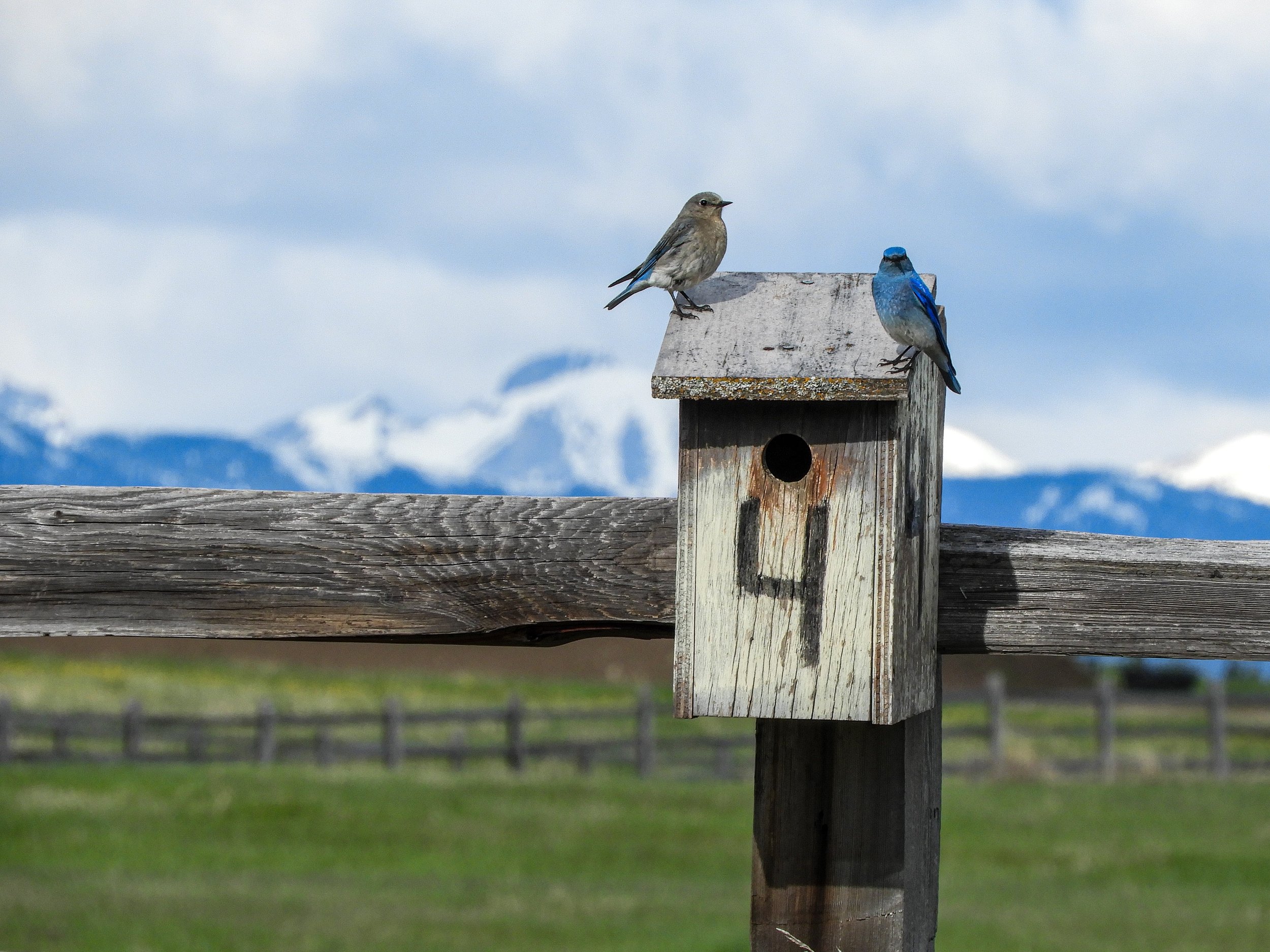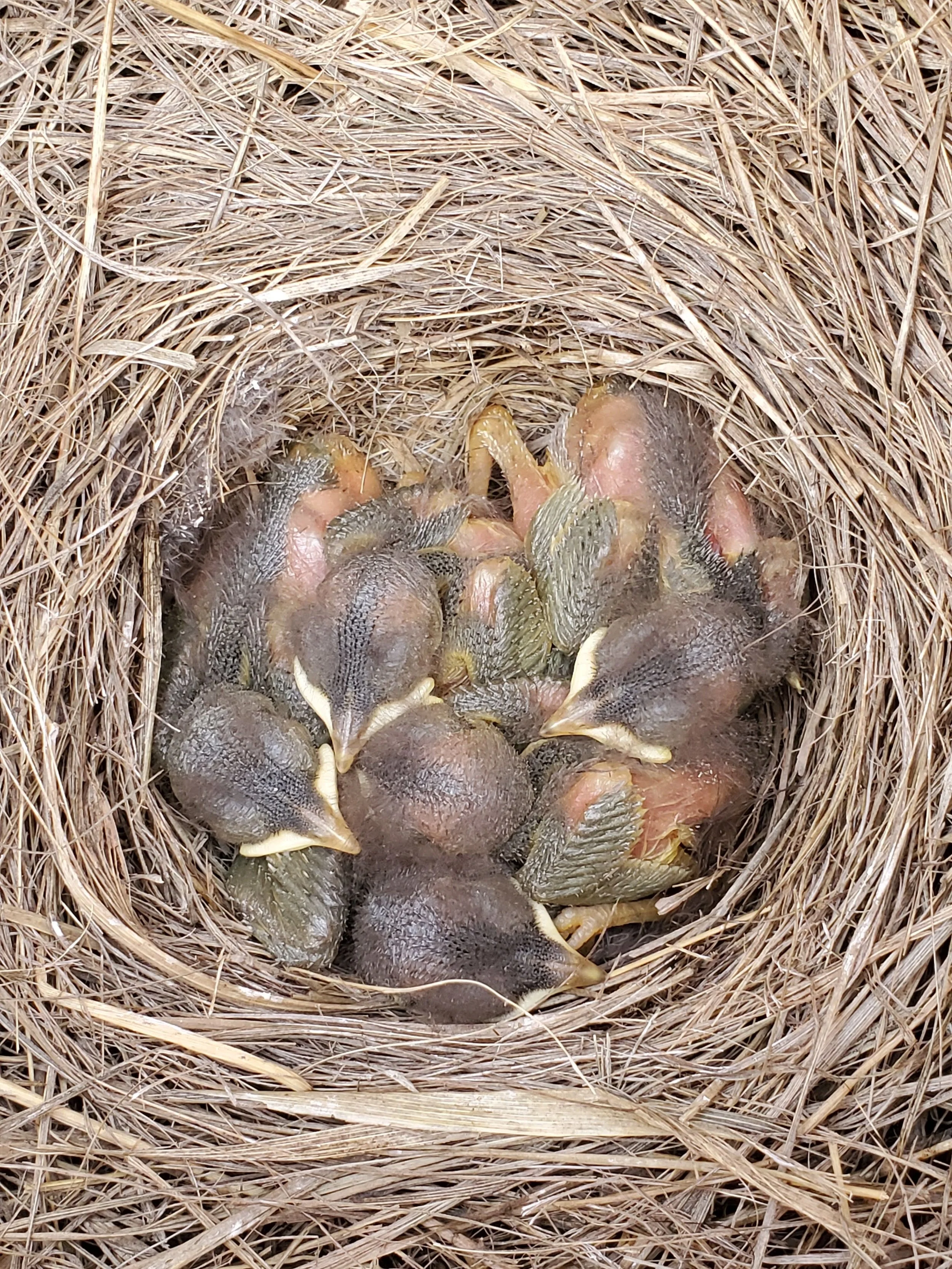
Spot the Sky-Blue Beauty
The mountain bluebird is an important species to study. Understanding the biology, habitat, and population dynamics of the mountain bluebird can provide valuable insights into the health and well-being of the ecosystems they inhabit, and inform conservation and management efforts to protect this species and its habitats.
The traditional Blackfoot name for the mountain bluebird is pi'ksíí.
Mountain Bluebird (Sialia currocoides)
Similar Species:
Eastern Bluebird (Sialia sialis)
Western Bluebird (Sialia mexicana)
Keys to identification.
Male mountain bluebirds are known for their striking, vibrant sky-blue plumage, while female mountain bluebirds are more muted with a grayish-blue coloration and pale blue wing-tips and tail.
Habitat & Behaviour
Mountain bluebirds prefer sparsely treed meadows or prairie grasslands and open forest areas with fence posts, scattered trees and bushes for perching.
In the winter months they flock together in groups and can be found in mixed flocks with western bluebirds, sparrows, and cedar waxwings. They can usually be found perching on fence posts, barbed wire or tree branches.
They migrate in groups up to 50 starting in March. They move north slowly stopping often to feed. They are fairly hardy and can withstand short cold snaps but can starve if there are prolonged cold temperatures.
In breeding months they can be found in pairs. As they are highly aggressive they require space between nesting sites.
Diet & Feeding Behaviour
The mountain bluebird primarily feeds on insects such as beetles, flies, wasps, and caterpillars, which they hunt by perching on a branch or hovering above a field and then swooping down to catch their prey. They are also known to feed on insects on the ground, especially in the winter when their preferred food sources are less abundant. They also eat more berries such as mistletoe, juniper, hackberry, and other plants in the winter months.
Mountain bluebirds have a distinctive feeding behavior where they swallow their food whole, and then regurgitate the indigestible parts, such as the exoskeleton of insects, in the form of pellets. This helps them to extract more nutrition from their food and maintain a healthy digestive system. During the breeding season, the male mountain bluebirds will feed the female and their young, bringing back food to the nest several times a minute. This feeding behavior helps to ensure the health and survival of their offspring.
Migration & Distribution
The mountain bluebird is a widespread species found throughout western North America, ranging from Alaska to Mexico. They are most commonly found in open areas such as meadows, prairies, and alpine tundra, and are known to occupy a variety of habitats including forests, deserts, and grasslands.
They migrate late in the fall and early in the spring. Migration timing is largely dependent on food abundance.
Mountain Bluebirds are found mostly in the south and west of the province.
Life Cycle of a Mountain Bluebird








